Died c. 560Llandeilo Fawr Venerated in Wales, Britain. | Name Saint Teilo | |
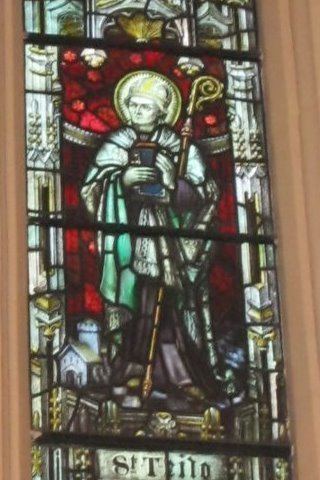 | ||
Saint Teilo (Latin: Teliarus or Teliavus; Breton: Teliau or Telo; French: Télo or Théleau; c. 500 – 9 February c. 560), also known by his Cornish name Eliud, was a British Christian monk, bishop, and founder of monasteries and churches from Penalun (Penally) near Tenby in Pembrokeshire, south Wales.
Contents
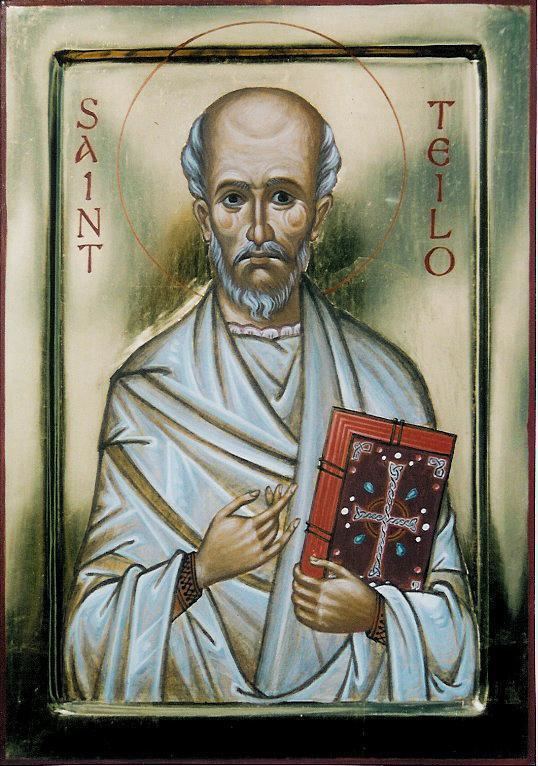
Reputed to be a cousin, friend, and disciple of Saint David, he was bishop of Llandaff and founder of the first church at Llandaff Cathedral, where his tomb is. He also founded Llandeilo Fawr, as well as Penally Abbey at his place of birth.
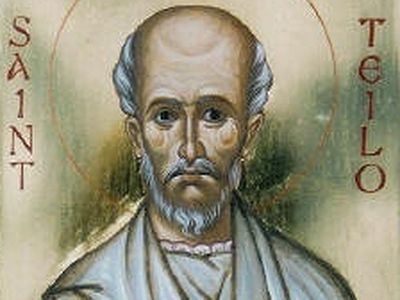
Biography
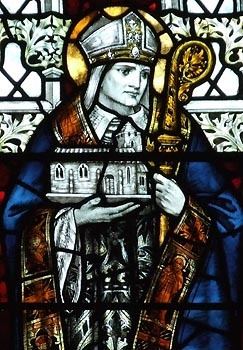
St Teilo may have been known as Eliau or Eilliau in Old Welsh. He was born at Penalun (Penally) around the year 500. Teilo was the son of Saint Issel (Welsh: Usyllt) and uncle of Saints Ismael and Euddogwy. In some modern sources, he is accounted the grandson of Ceredig son of Cunedda and thus a member of the royal family of Gwynedd which later considered Saint David among its members. However, that rather dubious connection to a northern dynasty seems to depend on the Iolo Manuscripts now known to have been forged by Edward Williams.
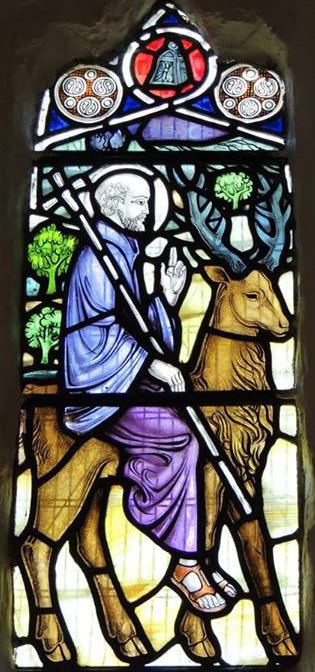
Teilo's education took place at two institutions directed by saints. The first was established by the renowned Church leader and educator Dubricius (or Dyfrig), while the second was the school directed by Paulinus of Wales at "Wincdi-Lantquendi" (thought to be Whitland) where he met and became a close companion of St David (Dewi).
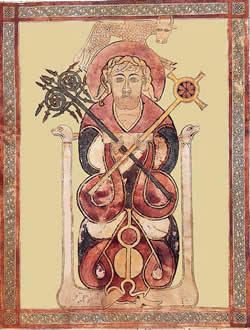
Like many founder-bishops they appear to have had experience in battle. Along with companions Aeddan and Ysfael, he traveled to Mynyw (St. Davids), where Dewi founded his abbey, and ousted an Irish pirate named Bwya, killed his cattle and burnt his fortress to the ground. He succeeded Dubricius as Bishop of Llandaff after Dubricius retired to a hermitage on Bardsey Island. Teilo founded the first church in Llandaff, headed a monastic school, and become bishop over Glywysing & Gwent.
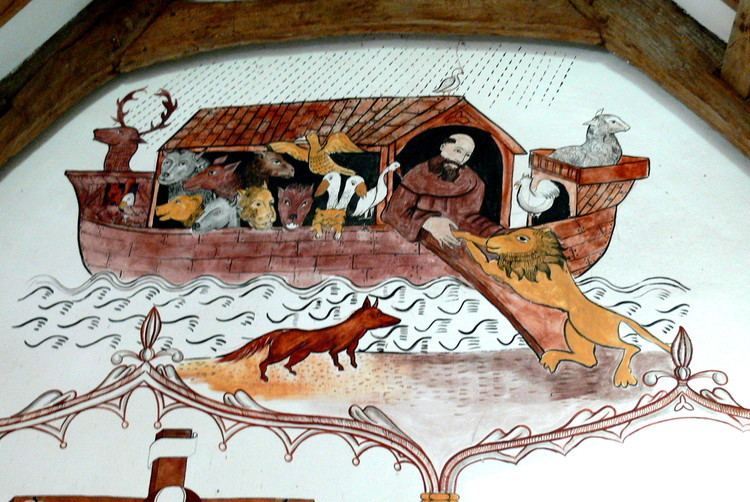
In the 540s yellow plague, probably the Justinian plague, affected Britain. In 549 Teilo, with a small group of monks, moved to Dol in Brittany. He is reported to have stayed in Brittany for seven years and seven months so must have left in 556 or 557, although some sources imply he returned in 554. They traveled through Dumnonia and were reported to have entertained King Geraint. and joined Samson of Dol at Dol: to this day the fruit groves they planted are known as the groves of Teilo and Samson. Legend has it that Teilo was asked by Budic II of Brittany to subdue a belligerent winged dragon, which he tamed and tied to a rock in the sea off Brittany.
After his return to Llandeilo Fawr, where he is documented to have died on 9 February, although the year, though probably around 560, is unknown, he became one of the most venerated men in Wales. At his death Teilo's body was said to have miraculously become three identical bodies, probably because his relics were claimed by three churches, Llandaff Cathedral, Llandeilo Fawr, and Penally Abbey. One tomb lies to the right of the altar of Llandaff Cathedral: his skull is kept in the south chapel. It is stated that many miracles were witnessed there while he was alive and also later at his tomb. Relics are now even more widely distributed: they are venerated at Landeleau (Finistère), Plogonnac (Finistère), and Saint Télo (Côtes-du-Nord).
Roman Martyrology
In the 2004 edition of the Roman Martyrology, Teilo is listed under 9 February with the Latin name Teliávus. He is recognised as bishop and abbot at the monastery in Llandaf, Wales. He is said to have been canonized, though the exact date is not known, but he is acknowledged as one who undertook extraordinary labours in behalf of the church in Wales and Cornwall and who was also celebrated in Armorica (Brittany and surrounding provinces). He is not infrequently represented, as in many Breton churches, riding a stag.
Legacy
At least 25 churches and schools in Wales, Brittany, and Cornwall and Devon are dedicated to him including St Teilo's Church, Llandeloy, St Teilo's Church, Llantilio Pertholey and St Teilo's Church in Wales High School, Cardiff, while there are three villages in Brittany named Landeleau, Landêliau and Saint-Thélo after him.
St. Teilo is the Patron Saint of the city of Cardiff.
Festival
The festival in honour of St.Teilo is observed at different times of the year at different places: in Wales and at Saint Télo, on 9 February; at Dol, on 29 November; and on 25 November in rest of the churches in Brittany. Following 1752, however, his fair at Llandeilo in Wales was not observed on the 9th but eleven days later on the 20th or on the Sunday following that date.
